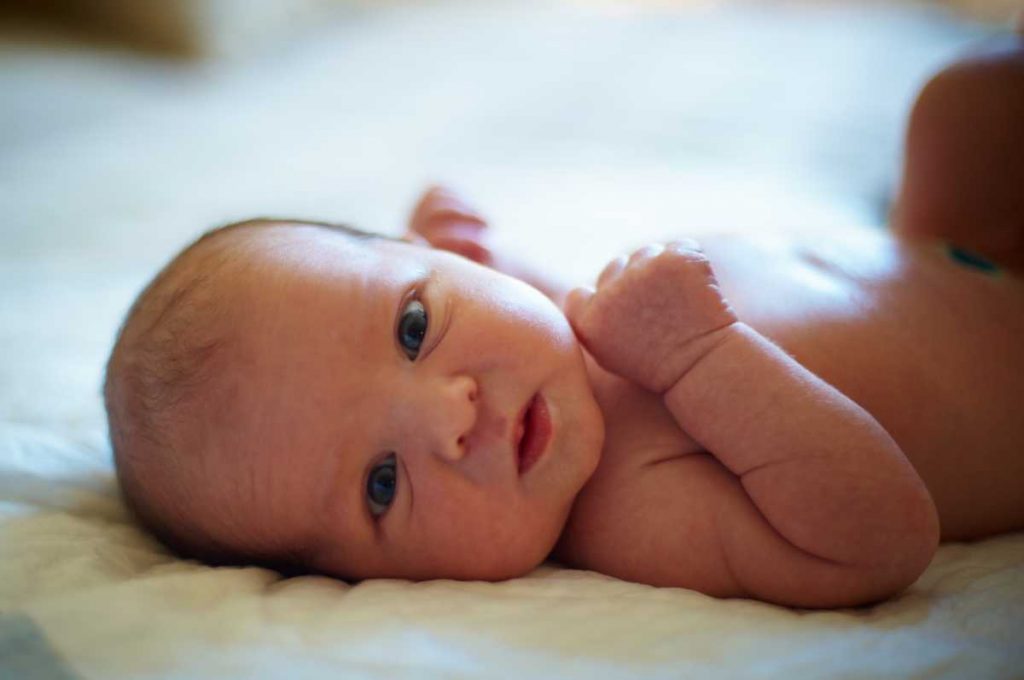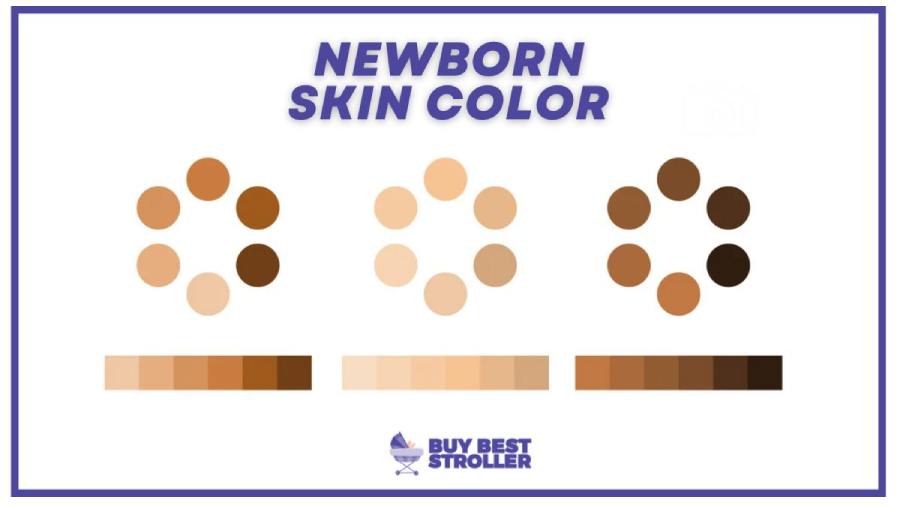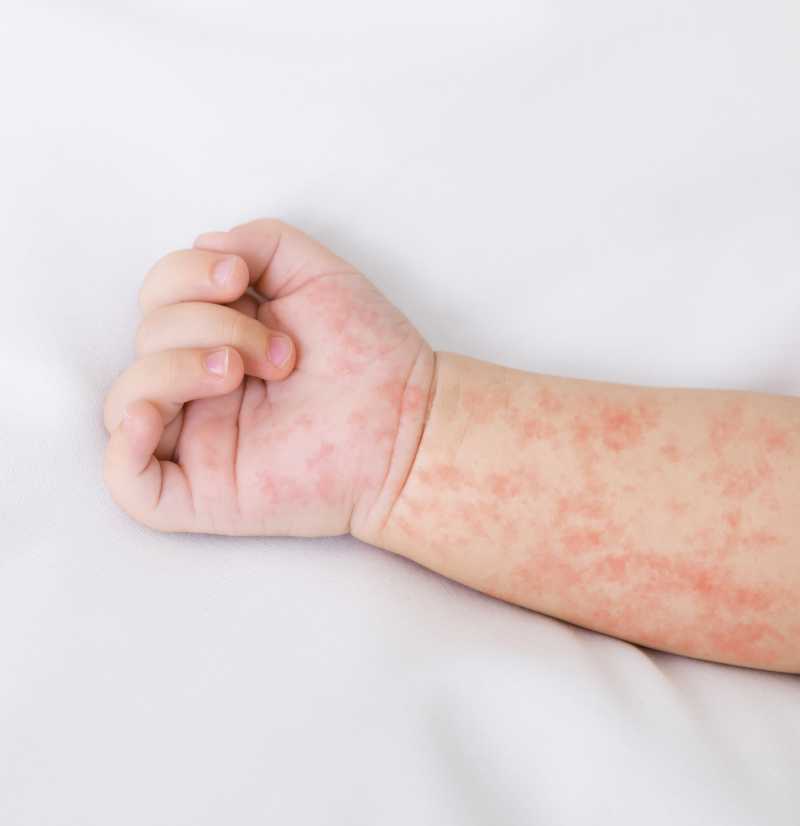You’ve probably heard the saying, “people change their colors so quickly.” Does your baby do the same? No, we’re talking about how newborns’ skin colors range widely from pink and white or yellow tones to blue.
There is no set range of ages at which the baby’s skin color changes. Additionally, it’s common for a newborn baby’s skin color to fluctuate throughout the initial years of life.
Environmental, genetic, or physiological factors could all be to blame, some color variations are typical. Others are indicators of a problem.

Factors that are linked to the baby’s skin color change
1. Genetic-related changes in a baby’s Skin color
Even for experts, the genetic causes of human skin color remain a mystery. A baby’s skin color is determined by a combination of genes inherited from both biological parents.
Melanin is the most significant hereditary material contrasting your baby’s natural skin color.
Your child will have a darker color the more melanin his skin has. Both biological parents’ dominant genes will contribute to some of a baby’s physical attributes.
2. Temperature-related changes in a baby’s skin color
The skin of a newborn is ten times more likely to burn quicker than the skin of an adult. Although the exact causes are unknown, newborn babies’ skin is highly vulnerable to the adverse consequences of the sun’s Ultraviolet rays.
According to epidemiological research, early sun exposure may hasten Genetic mutations and alterations in the basal layer of the epidermal cells.
Generally speaking, it is not harmful, but children should get medical help if they exhibit physical changes and symptoms in addition to their burns.
If your newborn is still under 12 months old, it is advised that you avoid taking them outdoors as much as possible between 10 a.m. and 4 p.m.
Sun protection is typically not required when UV levels are less than 3, while a few moments of direct UV exposure is believed safe and healthy for babies. However, if your infant is going to be outside for extended amounts of time during low UV periods, it is crucial that they be wrapped or worn in clothing that protects as much body as possible.

Here’s what different newborn skin color changes Indicate
What if it changes to red?
Newborns typically have light skin colors and a relatively fair appearance at birth. The pink color is caused by red blood vessels visible through your newborn’s thin layer. This redness gradually fades away over the first days after delivery. This redness may disappear during the first 24 hours in some cases.
What if it changes to blue?
Acrocyanosis: is a condition where the hands and feet turn blue. Healthy newborns are frequently affected by acrocyanosis. The condition resolves as the baby’s body adjusts to new blood circulation patterns. Later, if the infant is cold, acrocyanosis may reoccur (such as after a bath).
Cause:
It occurs because oxygenated blood is directed toward the body’s main significant organs, brain, respiratory system, and kidneys—instead of the hand and foot.
Cyanosis The entire body may have cyanosis, or the skin around the lips or face may be bluish. It is a typical observation that could last between 24 and 48 hours. It should be noted that a baby’s lips and face should never be bluish. If you find your baby’s face and lips are blue, or if she has dark or blue skin, this may suggest a severe condition that requires quick medical attention.
Cause:
It occurs having lower arterial oxygen saturation Because of a respiratory issue or as a result, the heart is not properly pumping oxygen-rich blood to the body’s other parts.
What If it changes to yellow?
About half of all newborns experience jaundice, which naturally fades away on its own. Some of its symptoms include:
- Pale yellow face and eyes: Gently move one finger on the baby’s eyebrow. Your kid could have jaundice if the squeezed region appears yellow.
- Urination: it is either pale yellow or colorless.
- Pale stools: Babies who are bottle-fed typically have yellowish-green feces. Infants who have been breastfed might have yellow-mustard stool.
Cause:
It occurs due to the body’s breakdown of red blood cells (a normal process after birth). The yellow hue is caused by the decomposition of a yellow chemical called bilirubin. The liver of the infant processes this chemical.
Note: A newborn’s liver may not always be able to handle bilirubin as quickly as is required. Babies who are preterm or early birth are most affected by this.
In babies, there are two forms of jaundice:
- Physiologic jaundice: It is a very typical form. It affects around six out of every ten babies. When bilirubin somehow doesn’t leave the body properly and fast. physiologic jaundice occurs. It tends to disappear when the infant is two weeks old. If it persists, medication may be required.
- Pathologic jaundice: Several illnesses, including viral, endocrine (hormonal), or genetic (inherited) conditions, might prevent the liver from properly metabolizing bilirubin. Make sure to properly address the cause of producing jaundice in these situations.
What if it changes to a darker one?
Don’t be surprised if your kid seems brownish after birth. This is because they’ve lost fluids and some weight, which might cause their complexion to appear blackish brown. However, if you’ve set up a good feeding schedule and they have sufficient breast milk, they should be able to restore a healthy skin complexion. If your baby was premature may also appear darker, but its skin tone will lighten a little as they gain weight.
What do the different colors of spots on a baby’s skin mean?
Bluish or purplish spots
They might vary in size from individual to individual and are thin and greyish-blue in hue. They usually vanish by the time a baby is two years old. The Mongolian patches on a baby’s back and shoulders, and hips. Mongolian spots are seen in more than 80% of newborns with African or Asian. They can also be seen in babies with a dark complexion of any ethnicity. These spots can be noticed in babies of African-American, Asian, and Indian descent. Melanomas (cells that create color, or melanin) stay in the underlying skin layer throughout embryogenesis, causing the patches to emerge. It is unknown what triggers this.
Rash
A rash is a typical reaction of your baby’s soft and sensitive skin to its unfamiliar setting. When your infant is around two days old, sporadic, pinhead-sized, or somewhat more prominent (pimples), may emerge in various parts of the body. These will go away with time.

Milia
“milia” refers to the pale, pinhead-sized patches typically found on and around a baby’s face or cheek. Even though they resemble little pimples, avoiding touching, breaking, or applying acne medicine to them is better. Milla may result in a rash or scarring of the skin. Milia are typical in babies and typically go away within a few weeks.
FAQs
When do newborns’ original skin tones emerge?
The color of your baby’s skin will evolve over the first few months after birth, and it will be fully grown at six months.
Which three key elements most strongly affect skin tone?
Skin color depends on some factors: melanosomes, the level of carotenoids, oxygenated hemoglobin, and regional blood flow.
What not to do with a six-month-old baby
There isn’t an option to change or predict your baby’s skin color because it is genetically set. Don’t go for any fairness treatments, beauty products, or various forms of handmade lotion. If you do that, keep that in mind:
- They will not work.
- They may harm your baby’s skin and cause skin irritation.
Conclusion
Every newborn’s head shape, body size, skin color, and other physical characteristics are unique. Some changes are temporary and will disappear as your infant adjusts to his or her new surroundings.
Parents must be aware of the changes in skin tone in newborns and how those changes may impact the child’s well-being.
Speak with your healthcare practitioner if you have questions regarding your child’s skin tone to receive specific advice.



